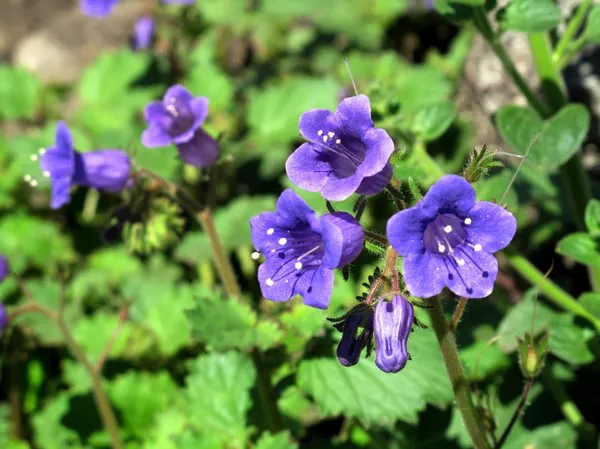Purple flowers have long held a special place in the world of floristry and horticulture. Their rich, regal color symbolizes luxury, royalty, and creativity. The spectrum of purple hues, from deep violet to delicate lavender, offers a wide variety of options for gardeners and flower enthusiasts alike.
The Diversity of Purple Flowers
Purple flowers encompass a vast range of shades and shapes, making them a favorite choice for gardeners and florists. Some popular purple flowers include lavender, lilac, orchids, violets, and petunias. The sheer diversity of purple blooms offers something for every taste and style. From the subtle and delicate to the bold and exotic, purple flowers make a striking addition to any garden or floral arrangement.
The Significance of Purple
The color purple has been associated with various symbolic meanings across different cultures and time periods. It often represents nobility, power, and luxury. Purple flowers, as a result, are frequently used to convey messages of admiration, dignity, and respect. They make a perfect choice for occasions that call for an elegant and regal touch, such as weddings, anniversaries, and formal events.
Types of Purple Flowers
Purple flowers come in many shapes and sizes. Some of the most popular purple blooms include:
Lavender: Known for its calming fragrance and soothing qualities, lavender is a beloved purple flower that is often used for its ornamental and medicinal purposes.
Lilac: With its sweet fragrance and delicate blossoms, lilac is a symbol of youthful innocence and love, making it a favorite for weddings and springtime arrangements.
Iris: Irises come in various colors, and purple irises, in particular, are celebrated for their unique and intricate blooms. They symbolize wisdom and compliments.
Petunia: Petunias are known for their vibrant and trumpet-shaped flowers. Purple petunias are popular for adding a pop of color to gardens and containers.
Orchid: Orchids are known for their exotic beauty, and purple orchids are often associated with luxury and admiration.
Violet: Violets are charming, small flowers that represent humility and modesty. They are often used in nosegays and posies.
Cultural Significance of Purple Flowers
Purple flowers have played a significant role in cultures worldwide. In ancient Rome, purple was a symbol of imperial power and was reserved for the Emperor’s use. In Asian cultures, purple is often associated with wealth and prosperity. Purple orchids, for example, are a highly regarded gift in many Asian countries. In more recent history, purple has been associated with various social and political movements, symbolizing everything from LGBTQ+ pride to women’s suffrage.
Growing and Caring for Purple Flowers
Cultivating purple flowers can be a rewarding experience, but it requires proper care and attention. Depending on the type of purple flowers you choose, you may need to consider factors such as soil, sunlight, and water requirements. Lavender, for instance, thrives in well-draining soil and full sun, while violets prefer partial shade and evenly moist soil. Research the specific needs of the purple flowers you wish to grow to ensure their health and vitality.
Popular Varieties of Purple Flowers
The world of purple flowers is vast and varied, with numerous species and hybrids to explore. Some popular purple flower varieties include:
Purple Roses: These classic flowers are known for their timeless beauty and convey messages of love and admiration.
Purple Dahlias: With their striking, intricate blooms, purple dahlias add a touch of drama and elegance to gardens and bouquets.
Purple Hyacinths: These fragrant flowers are a symbol of constancy and sincerity, making them a heartfelt gift.
Purple Lilies: Purple lilies are often associated with honor and success, making them a popular choice for awards and accolades.
Purple Tulips: Purple tulips represent royalty and admiration, and they are a charming addition to spring gardens.
Language of Flowers: Purple Flower Meanings
Purple flowers, like all flowers, have specific meanings in the language of flowers, or floriography. Understanding these meanings can help you convey specific sentiments through your floral arrangements. For example, purple roses signify love at first sight, while purple lilacs represent the first emotions of love. Whether you’re crafting a bouquet for a special occasion or simply looking to express your feelings, the language of flowers can be a valuable tool.
Using Purple Flowers in Landscaping
Purple flowers can enhance the beauty of your garden and landscaping. When used strategically, they can create focal points, add contrast, and create a sense of depth in your outdoor space. Consider incorporating purple flowers into your landscape design to take advantage of their visual appeal and symbolic significance.
Preserving Purple Flowers
Preserving purple flowers allows you to enjoy their beauty long after they’ve been picked. You can press them, dry them, or use various preservation techniques to create decorative items like framed arrangements, wreaths, and potpourri. Preserved purple flowers make for charming home decor and thoughtful gifts.
Conclusion
In the world of flowers, purple blooms stand out as a symbol of elegance, luxury, and creativity. Their diverse range of hues and cultural significance make them a favorite choice for both gardeners and flower enthusiasts. Whether you’re considering purple flowers for your garden, a special occasion, or simply to express your feelings, understanding their names, characteristics, and cultural importance will help you appreciate the timeless allure of these regal blossoms. Embrace the world of purple flowers and bring their captivating beauty into your life.


